Greek Medical Texts by Mónica Durán Mañas
Emerita, Revista de Lingüística y Filología Clásica, 2024
Reseña a Manetti, Daniela, Perilli, Lorenzo y Roselli, Amneris (eds.). Ippocrate e gli altri. Rom... more Reseña a Manetti, Daniela, Perilli, Lorenzo y Roselli, Amneris (eds.). Ippocrate e gli altri. Rome: École française de Rome, 2022, 549 pp., en https://emerita.revistas.csic.es/index.php/emerita/article/view/1325/1341.
Guillermo Escolar, 2023
Este volumen reúne los resultados obtenidos por el proyecto FFI-2017-82151-P, «La medicina hipocr... more Este volumen reúne los resultados obtenidos por el proyecto FFI-2017-82151-P, «La medicina hipocrática y sus continuado- res: Estudios filológicos», financiado por la DGICYT. Los trabajos aquí publicados comprenden un variado espectro de temas relacionados con el mundo de la medicina antigua. Así, el libro incluye tanto estudios sobre aspectos estrictamente lingüísticos como otros más ligados a cuestiones de historia de la ciencia y de la tradición médica en la cultura cristiana.
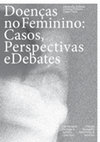
Lab2pt, 2023
Μαῖα, τῖτθη y τροφος en la medicina griega antigua. ἐπιτήδειος δέ ἐστιν ἡ γραμμάτων ἐντός, ἀγχίνο... more Μαῖα, τῖτθη y τροφος en la medicina griega antigua. ἐπιτήδειος δέ ἐστιν ἡ γραμμάτων ἐντός, ἀγχίνους, μνήμων, ἐπιτήδειος δέ ἐστιν ἡ γραμμάτων ἐντός, ἀγχίνους, μνήμων, φιλόπονος, κόσμιος καὶ κατὰ τὸ κοινὸν ἀπαρεμπόδιστος ταῖς φιλόπονος, κόσμιος καὶ κατὰ τὸ κοινὸν ἀπαρεμπόδιστος ταῖς αἰσθήσεσιν, ἀρτιμελής, εὔτονος, ὡς δ᾽ ἔνιοι λέγουσιν καὶ αἰσθήσεσιν, ἀρτιμελής, εὔτονος, ὡς δ᾽ ἔνιοι λέγουσιν καὶ μακροὺς καὶ λεπτοὺς ἔχουσα καὶ τοὺς τῶν χειρῶν δακτύλους μακροὺς καὶ λεπτοὺς ἔχουσα καὶ τοὺς τῶν χειρῶν δακτύλους καὶ ὑπεσταλκότας ταῖς ῥαξὶν τοῦς ὄνυχας. καὶ ὑπεσταλκότας ταῖς ῥαξὶν τοῦς ὄνυχας. Ella (la μαῖα) es versada en letras, sagaz, con memoria, Ella (la μαῖα) es versada en letras, sagaz, con memoria, amante del trabajo, decente y, por lo general, de sentidos amante del trabajo, decente y, por lo general, de sentidos despiertos, de miembros bien formados, enérgica, y, como despiertos, de miembros bien formados, enérgica, y, como algunos dicen, con los dedos de las manos largos y finos, y las algunos dicen, con los dedos de las manos largos y finos, y las uñas cortadas hasta las yemas. uñas cortadas hasta las yemas.
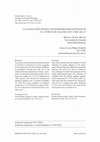
Exemplaria Classica. Journal of Classical Philology, 2022
El manuscrito 1 Città del Vaticano, Biblioteca Apostolica Vaticana, Vat. Urb. Gr. 67 es un códice... more El manuscrito 1 Città del Vaticano, Biblioteca Apostolica Vaticana, Vat. Urb. Gr. 67 es un códice dedicado enteramente a Galeno compuesto de dos partes bien diferenciadas cronol gica ente: la s antigua data le hacia 1300 ocupa los. 53 275 ientras ue la s reciente. 1 52 y 27 1 fue a adida a ediados del siglo XV probablemente en Constantinopla 2. Es en la parte antigua del volu en actual al nal de la copia de aleno De compositione medicamentorum secundum locos (= De comp. med. sec. loc. , y para completar el cuaderno nu erado 17 donde el is o copista ha a adido. 1 6v 7v una reve colección de remedios de tradición galénica que editamos en estas páginas. El li ro 10 de este tratado 13.321 61 3 , que precede a la colección añadida, contiene recetas para pacientes con afecciones nefríticas, ciáticas, isquiáticas, artríticas y gotosas, fundamentalmente, y los remedios que en el Vat. Urb. Gr. 67 se presentan como su apéndice comparten esta temática. Se trata de un total de 14 recetas que nu era os 1 1 para facilitar su referencia 4. a c lecci n in i a e reme i s i an in s en el c ice e alen ...
Guillermo Escolar Editor, 2023
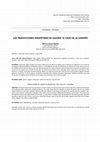
Asclepio. Revista de Historia de la Medicina y de la Ciencia, 2021
El presente trabajo estudia las primeras traducciones de Galeno al español que se realizaron en A... more El presente trabajo estudia las primeras traducciones de Galeno al español que se realizaron en Argentina, en el marco de un proyecto editorial dirigido por Aníbal Ruiz Moreno. La investigación pone de manifiesto que la colección en la que aparecen no era en realidad solo de obras de Galeno, sino una colección general con textos relevantes para la historia de la medicina. Se añade el caso concreto de La sangría como estudio de caso para una evaluación preliminar de la naturaleza de las traducciones ofrecidas por Ruiz Moreno y su equipo. El proyecto quedó inconcluso debido a la repentina muerte de su director por lo que quedaron algunos tratados galénicos sin publicar. El artículo aporta una hipótesis plausible sobre el destino de estas traducciones. Aníbal Ruiz Moreno, fue nada menos que el fundador, junto con Pedro Laín Entralgo, de la revista que hoy se llama Asclepio.
Ágora. Estudos Clássicos em Debate, 2021
Though phlebotomy is a well-documented practice since Hippocrates, only after Galen has its use b... more Though phlebotomy is a well-documented practice since Hippocrates, only after Galen has its use become widespread in all types of diseases. Both in the configuration of the theory explaining its beneficial effects and in the particulars of its practice, women were especially relevant as clinical cases. In this article, the presence of women in Galenʹs treatises on phlebotomy will be examined, in order to establish if the arguments concerning female physiology on which the author grounds this practice actually justify the treatment.
Ediciones Clásicas, 2020
Las tres obras que componen el presente volumen –Sobre la flebotomía contra Erasístrato (Perì phl... more Las tres obras que componen el presente volumen –Sobre la flebotomía contra Erasístrato (Perì phlebotomías pròs Erasístraton [XI. 147-186 K.]), Sobre la flebotomía contra los erasistrateos en Roma (Perì phlebotomías pròs toùs Erasistrateíous en Rṓmēi [XI. 187-249 K.]) y Sobre la curación mediante la flebotomía (Perì phlebotomías therapeutikón [XI. 250-316 K.])– poseen una unidad temática que permite considerarlas como una trilogía, pese a la distancia temporal que las separa. En ellas, Galeno recoge experiencias y reflexiones sobre la flebotomía, un tratamiento terapéutico empleado en diversos continentes para todo tipo de dolencias desde el paleolítico hasta el siglo XIX.

Bryn Mawr Classical Review, 2021
El presente volumen constituye la primera edición crítica del libro VI del Comentario de Galeno a... more El presente volumen constituye la primera edición crítica del libro VI del Comentario de Galeno a los Aforismos de Hipócrates con traducción al italiano y acompañada de comentario. Aparece en el marco del esfuerzo internacional[1] que se está llevando a cabo en los últimos años por editar, traducir y comentar los textos galénicos que en su mayoría han permanecido, como ha observado el profesor Nutton (2008: 355),[2] sin apenas suscitar el interés de la comunidad científica. Se publica en Alemania en la colección Akademie Forschung de la prestigiosa editorial De Gruyter como resultado de la labor realizada en el ámbito de la Academia de Ciencias de Berlín-Brandeburgo, que acoge el proyecto Corpus Medicorum Graecorum (CMG) dirigido por el Dr. Christian Brockmann de la Universidad de Hamburgo. Este proyecto, en cuyo seno se lleva a cabo una magnífica labor de edición, a veces con traducciones como la presente, se propone en los próximos años, tal y como anuncia su página web, enfocarse en la edición y la interpretación de las obras galénicas, es decir, no solo editar los textos, sino acompañarlos de una traducción comentada. Creo que esta línea de trabajo es un acierto, en la medida en que trata de ofrecer al lector la mejor versión al tiempo que le permite valorar por sí mismo las distintas lecturas posibles con el apoyo de información sólida y pertinente.

Bryn Mawr Classical Review, 2020
treatise 'De indolentia' in context. A tale of resilience. Studies in ancient medicine, 52. Leide... more treatise 'De indolentia' in context. A tale of resilience. Studies in ancient medicine, 52. Leiden: Brill, 2018. vi, 296 p.. ISBN 9789004383289 €72,00. Review by Mónica Durán Mañas, Universidad de Granada. monicaduran@ugr.es Publisher's Preview [Authors and titles are listed at the end of the review.] The volume under review is a noteworthy open access book. Since Galen's treatise De indolentia -henceforth Ind.-was discovered in 2005, two different collections of essays have been published.[1] The present volume contains 11 papers from a one-day conference in July of 2014 by a broad spectrum of scholars from classicists to philosophers. In the Introduction, Petit explains that the main reason she chose this work as the guiding theme of the conference was the new translation done by Vivian Nutton,[2] attendee at the conference and to whom the volume is dedicated. His new English version of Galen's Ind. offers fresh interpretations differing at some significant points from those of Kotzia-Soutiroudis and Boudon-Millot-Jouanna-Pietrobelli[3] and contains clarifying notes, references, and appendices in order to provide substantial data for the understanding of the text. Three critical editions and four translations in less than 15 years show the interest that this work has aroused, especially if we compare it with Galen's other treatises, like De compositione medicamentorum, which have remained for centuries without being translated into any modern language, perhaps because no critical edition exists. The contributions are structured in three parts that place Ind. in the context of Galen's oeuvre, the philosophical tradition, and the history of the Roman Empire, respectively. In the Introduction, Petit offers a brief summary of the history and interest of the text and makes a brief review of each paper emphasizing the underlying interdisciplinary approaches. The epilogue is dedicated to the possible reception of Galen's Ind. in the later Arabic texts on the topic of dispelling sorrow. Peter N. Singer summarizes the main findings and problems of the Galenic texts contained in MS Vlatadon 14: the previously lost Ind. and the full Greek text of My Own Doctrines, a Greek version of My Own Books and The Order of My Own Books the three of which were already extant, but with significant lacunae. Singer discusses the new information shed by MS Vlatadon 14 under five headings: archaeology; scholarship and bibliographical practice; literary and scholarly activity, with special attention to book-composition; moral philosophy; and Galen's summation of, and attitude towards, his own central philosophical doctrines. Singer brings clarifying examples to some of the most debated textual cruces in Ind., starting with the title itself. Caroline Petit points out that Ind. provides new information related to philosophical issues as well as to Galen's own life. This new material has stirred controversy among scholars trying to harmonize it with the rest of his works. Petit proposes a rhetorical approach to appreciate the contribution of Ind. in terms of Galen's self-characterization. With that aim, she analyzes the role of old age in Galen's texts, conscious that his person and ēthos are intertwined, thereby complicating the separation of real facts from literary constructs. She concludes that Galen transforms the traditional ēthos to chisel his own aging self-portrait as an honest scholar and gentleman. The contribution by Amy Coker is a courageous attempt to approach Galen's lost treatise on the vocabulary of Old Comedy, taking its mention in Ind. 23b-28 as a starting point. Coker points out that Galen cites texts only from certain comedies and thinks that this fact gives a glimpse of his preferred authors. Her examination of the final part of Ind. 27-28, leads her to suggest that Galen's interest in the meaning of the words was similar to that of other lexicographers of his time, like the sophist Phrynichus. This analysis places the Pergamene in the literary milieu of the 2 century AD. Despite the relative lack of evidence that opens a huge number of questions, Coker makes impressive statements about Galen's interest in the language of the comic theatre, his main sources, preferred comic playwrights, his use of compendia and lexica, the most likely format of his lost works, and his comments on the comical texts, which are not so far from those of the sophists whom he himself criticizes elsewhere. Peter N. Singer links the new material from Ind. with the information available in other extant works, especially in Lib. Prop. and Ord. Lib. Prop., to open new perspectives on Galen's publishing intentions. In particular, Singer presents crucial passages that illuminate the topic, focusing on the meaning of the phrase pros ekdosin in its context. Parallel to other detailed studies on Galen's publishing process such as that of López Férez,[4] Singer carries out a meticulous and suggestive analysis of Galen's own role in ekdosis that offers new and challenging interpretations of the preserved texts. Evidence hints at the possibility that, even when the Pergamene affirms that he is writing for his friends, he was thinking of a wider dissemination of his works, independent of the previous private circulation among friends, who were always helpful in suggesting improvements or corrections. Next Christopher Gill analyzes to what extent Ind. is a coherent work when taken as an exercise in the philosophical therapy of the emotions. In addition to Ind., the author focuses on the first book of Aff. Pecc. Dig., in which, influenced by his father's advice, Galen combines medicine and philosophy. Gill thinks at least some parts of the first book of Aff. Pecc. Dig. were written later than Ind.: Stoic-Epicurean and Platonic-Aristotelian approaches are both present, even though the therapeutic method consistently recommended (rational self-monitoring and conscious selfcorrection) better matches the former. He concludes that one may find in Galen a coherent conceptual and philosophical framework not strictly attached to any particular philosophical sect. Robert J. Hankinson explores the possible influence of Pyrrhonian skeptics and atomism, two groups against which Galen was frequently opposed. Recognizably linked to the consolation literature genre, Ind. is closely related to the concept of ataraxia, common to Stoic, Epicurean, and Skeptic schools, as well as that of apatheia -and even metriopatheia contrary to Tieleman's contribution-, rooted in the skeptical doctrine. Hankinson finally suggests that in regard to distress and the appropriate response to loss, the programs of the Pyrrhonists are close to Galen's. Next, Peter N. Singer focuses on a central concept developed in Ind.: lupē. This term, "a quasimedical category" alluded to in the title Περὶ ἀ-λυπίας, refers to a negative emotion that must be controlled in the ethical sphere to ensure well-being at a medical level. Singer thoroughly analyzes the presence of this topic -elimination of negative emotions-both in Ind. and the treatise Aff. Pecc. Dig., concluding that if Ind. does not depart from Aff. Pecc. Dig., at least it gives greater clarity about this concept in Galen's thought.
Panace@, 2018
Abstract: This paper reviews the different terms—mainly substantives and verbs—related to the sem... more Abstract: This paper reviews the different terms—mainly substantives and verbs—related to the semantic field of ‘cutting’ or
‘sectioning’ that appear in Galen’s three treatises on bloodletting: De venae sectione adversus Erasistratum, XI. 147-186 K; De
venae sectione adversus Erasistrateos Romae degentes, XI. 187-249 K, and De curandi ratione per venae sectionem, XI. 250-
316 K. In particular, the nuances of the terms will be examined in order to provide a contextualized translation into Spanish. It
will be shown that the differences in the vocabulary of bloodletting possibly reflect the evolution of the author due to the three
decades that mediate between his first and last work.
Keywords: cutting, phlebotomy, Galen, medicine, sectioning, veins, vocabulary.
Hellenistic & Imperial Literature by Mónica Durán Mañas
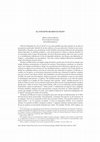
Ediciones Clásicas, 2020
Filón de Alejandría (ca. 30 a.C-50 d.C.) es un autor prolífico que deja traslucir en su obra un p... more Filón de Alejandría (ca. 30 a.C-50 d.C.) es un autor prolífico que deja traslucir en su obra un pensamiento particular imbuido de las dos culturas a las que perteneció. Nacido en una comunidad judía y educado en sus enseñanzas, recibió también una potente influencia de la formación griega imperante, la enkýklios paideía 2 , y esta circunstancia se refleja en algunos detalles 3 de su concepción sobre el amor. En particular, de toda la literatura griega sobre este tema, su obra se ve notablemente influida por el érōs de raigambre platónica, que alcanza una dimensión ontológica y antropológica sin precedentes 4. Con todo, existen también diferencias insondables, sobre todo relativas al amor erótico. El amor en Filón abarca un amplio campo de matices, puesto que se trata de un concepto que adopta distintas connotaciones en función del contexto. Generalmente constituye un elemento motor, que impulsa al individuo a dirigir sus movimientos hacia diferentes aspectos que se posicionan en alguno de los extremos de una dualidad positiva o negativa. En el lado positivo se hallan las cualidades divinas, así como los elementos que alimentan el espíritu y lo liberan; en cambio, en el negativo, se encuentran elementos terrenales que esclavizan el espíritu e impiden que este se eleve a las esferas celestes. Esta dualidad se encuentra presente de manera constante en Filón, de suerte que érōs adquiere, desde un punto de vista semántico, lo que en este trabajo se denominará polo positivo o negativo. Tal dualidad puede observarse en la obra del mismo autor también en el empleo de otros términos como sýnodos, "unión", palabra presente en el título de Sobre la unión con los estudios preliminares (Perì tês pròs tà propaideúmata synódou) (desde aquí = Sobre la unión). Como anota Triviño, 1976, 47 en su traducción, sýnodos significa literalmente "unión en matrimonio", "unión sexual" o "cohabitación con alguien" pero, empleado de forma simbólica, adquiere otras connotaciones y puede convertirse en "unión espiritual". Así sucede, por ejemplo, en Sobre la unión, 12.5, donde se habla de la "unión de la inteligencia con la virtud" (noû gàr pròs aretḗn esti sýnodos). El interés de Filón por el amor es innegable, pues este concepto se halla presente en el 100% del total de las obras conservadas. Concretamente, el término érōs aparece en 94 ocasiones: 79 en singular −20 veces en nominativo (érōs), 22 en acusativo (érōta), 15 en genitivo (érōtos), 22 en dativo (érōti)− y en 15 ocasiones en plural −3 veces en nominativo (érōtes), 10 en acusativo (érōtas), 2 en genitivo (erṓtōn) y ninguna en dativo− y adquiere distintos matices hasta el punto de que no siempre es conveniente traducirlo por "amor".
Mediterranea. International Journal on the Transfer of Knowledge, 2022
The book under review is the 46 th volume of the series Italian perspectives, a collection of wor... more The book under review is the 46 th volume of the series Italian perspectives, a collection of works devoted to Italian culture under an innovative and interdisciplinary approach. The author, Cecilia Muratori, is Research Fellow at the Centre for Anglo-German Cultural Relations (Queen Mary University of London) and has dedicated several works to Renaissance animal ethics with special attention to the distinction between animals and humans. Now, with Renaissance Vegetarianism: The Philosophical Afterlives of Porphyry's 'On Abstinence', she focuses on the interest that Porphyry's On Abstinence aroused in the Renaissance, warning in the first lines of the introduction that the title contains a deliberate, but useful anachronism.
Philosophy in Society Virtues and Values in Plutarch, 2008
Nomos, Kosmos & Dike in Plutarch, 2014
Tychè et Pronoia: la marche du monde selon Plutarque, 2010
Le Monde des Rêves à l'Époque Hellénistique dans les Vies et les Moralia Le Monde des Rêves à l'É... more Le Monde des Rêves à l'Époque Hellénistique dans les Vies et les Moralia Le Monde des Rêves à l'Époque Hellénistique dans les Vies et Les Moralia étude sur le vocabulaire et la pensée de plutarque
Université Charles-de-Gaulle – Lille 3, 2005
“Las mujeres en la Vida de Pericles” en Van der Stockt, L.-Titchener, F.-Ingenkamp, H.G.-Pérez Jiménez, A. (eds.), Gods, Daimones, Rituals, Myths and History of Religions in Plutarch’s Works, Universidad de Málaga-Utah State University, Logan (ISBN: 978-0-615-41433-1), págs.143-162. Universidad de Málaga-Utah State University, Logan, 2010




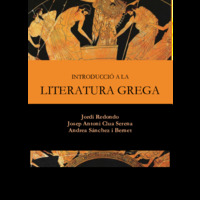




Uploads
Greek Medical Texts by Mónica Durán Mañas
‘sectioning’ that appear in Galen’s three treatises on bloodletting: De venae sectione adversus Erasistratum, XI. 147-186 K; De
venae sectione adversus Erasistrateos Romae degentes, XI. 187-249 K, and De curandi ratione per venae sectionem, XI. 250-
316 K. In particular, the nuances of the terms will be examined in order to provide a contextualized translation into Spanish. It
will be shown that the differences in the vocabulary of bloodletting possibly reflect the evolution of the author due to the three
decades that mediate between his first and last work.
Keywords: cutting, phlebotomy, Galen, medicine, sectioning, veins, vocabulary.
Hellenistic & Imperial Literature by Mónica Durán Mañas
‘sectioning’ that appear in Galen’s three treatises on bloodletting: De venae sectione adversus Erasistratum, XI. 147-186 K; De
venae sectione adversus Erasistrateos Romae degentes, XI. 187-249 K, and De curandi ratione per venae sectionem, XI. 250-
316 K. In particular, the nuances of the terms will be examined in order to provide a contextualized translation into Spanish. It
will be shown that the differences in the vocabulary of bloodletting possibly reflect the evolution of the author due to the three
decades that mediate between his first and last work.
Keywords: cutting, phlebotomy, Galen, medicine, sectioning, veins, vocabulary.
For the 2024 conference, we are also welcoming papers which study in Antiquity and in Middle Ages:
How colours were used to express health/illness, emotions or colour of skin in writing or artistic representation.
What colors were used in everyday attire and on special occasions and why.
Which pigments and dyes were chosen to decorate houses or decorative elements found in them and which was their function.